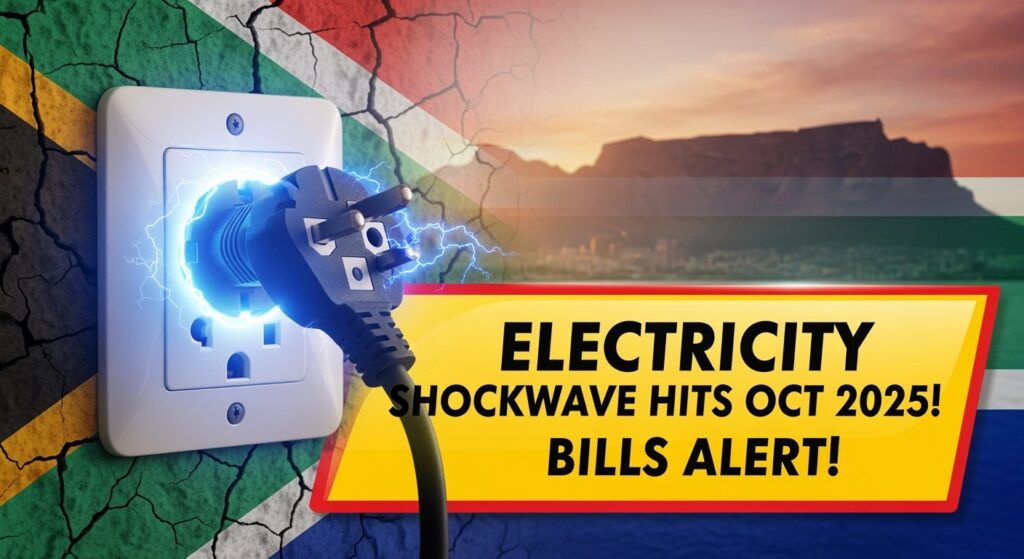Electricity Law Changes 2025: As we approach October 2025, I want to make sure you’re fully prepared for the significant changes coming to electricity laws that will affect how you pay your bills. These reforms represent the most substantial overhaul of the electricity sector in decades, with new regulations designed to promote renewable energy, adjust pricing structures, and provide consumers with more transparency. Have you been keeping up with these upcoming changes? If not, don’t worry – I’ve compiled everything you need to know about the major changes in electricity laws coming in October 2025 before you pay your next bill.

What Are the Key Electricity Law Changes?
The new electricity laws will introduce a tiered pricing system based on consumption levels rather than the flat-rate model many of us are accustomed to. Under these regulations, households will be categorized into usage brackets, with lower rates applied to essential consumption and premium rates for higher usage. Additionally, the legislation mandates that all electricity providers clearly itemize bills, showing exactly what you’re paying for – from generation costs to transmission fees and taxes. Smart meter installation will become mandatory for all residences by December 2025, allowing for real-time monitoring of your electricity usage. These electricity law changes aim to encourage conservation while ensuring fair pricing for essential energy needs.
Why These Changes Matter to Consumers
These major changes in electricity laws will directly impact your monthly expenses and potentially alter your energy consumption habits. For budget-conscious households, understanding the new tiered pricing could mean significant savings if you can keep usage within lower-cost brackets. The transparency requirements will finally demystify those confusing electricity bills, empowering you to make informed decisions about your energy use. Environmental benefits are another crucial aspect, as the laws incentivize renewable energy adoption through tax credits and reduced rates for homes with solar installations. Ultimately, these reforms shift more control to you as a consumer, but only if you understand how to navigate the new system effectively.
 October 2025 Traffic Fines – Everyday Mistakes Now Carry Heavy Penalties for South African Drivers
October 2025 Traffic Fines – Everyday Mistakes Now Carry Heavy Penalties for South African Drivers
When Will These Changes Take Effect?
The implementation timeline for these electricity law changes is phased, with the core regulations taking effect on October 1, 2025. However, some provisions have earlier deadlines – billing transparency requirements begin August 15, 2025, giving providers time to update their systems before the full rollout. The smart meter installation mandate has a longer compliance window, extending to December 31, 2025. If you’re wondering about rate adjustments, those will be implemented immediately on October 1st, so it’s crucial to understand your usage patterns before that date. Utility companies are required to send notification letters explaining these changes at least 60 days before implementation, so watch your mail in early August for important information specific to your provider.
 October 2025 Old Age Grant R2,315 – SASSA Confirms Province-Wise Payout Schedule for Beneficiaries
October 2025 Old Age Grant R2,315 – SASSA Confirms Province-Wise Payout Schedule for Beneficiaries
How to Prepare for the New Billing System
To avoid bill shock when these electricity law changes take effect, I recommend auditing your current electricity usage immediately. Start by reviewing your past 12 months of bills to identify your consumption patterns and determine which tier you’ll likely fall into under the new system. Next, consider scheduling an energy efficiency assessment – many utilities offer these for free – to identify ways to reduce your usage before the new rates apply. Update your appliances if possible, as the new laws include temporary tax credits for energy-efficient purchases made before December 2025. Finally, explore whether your home qualifies for renewable energy incentives under the new framework, as installing solar panels could now be significantly more affordable with the enhanced rebate structure.
 October 2025 NSFAS Student Funding – Government Warns Students Not to Miss This Week’s Deadline
October 2025 NSFAS Student Funding – Government Warns Students Not to Miss This Week’s Deadline
Real-World Impact Example
The Johnson family in Colorado participated in a pilot program mirroring these upcoming electricity law changes. Previously paying a flat $210 monthly rate, they were initially concerned about potential increases. After understanding the tiered system, they made modest adjustments to their usage habits – running major appliances during off-peak hours and upgrading to LED lighting throughout their home. The result? Their monthly bill decreased to $175 despite overall electricity rates increasing. The transparency in billing also helped them identify that their second refrigerator in the garage was costing them nearly $30 monthly, prompting them to decommission it and save even more.
 Big Relief: SASSA Confirms R3,070 SRD Grant October 2025 Payments – See If You Qualify Now
Big Relief: SASSA Confirms R3,070 SRD Grant October 2025 Payments – See If You Qualify Now





